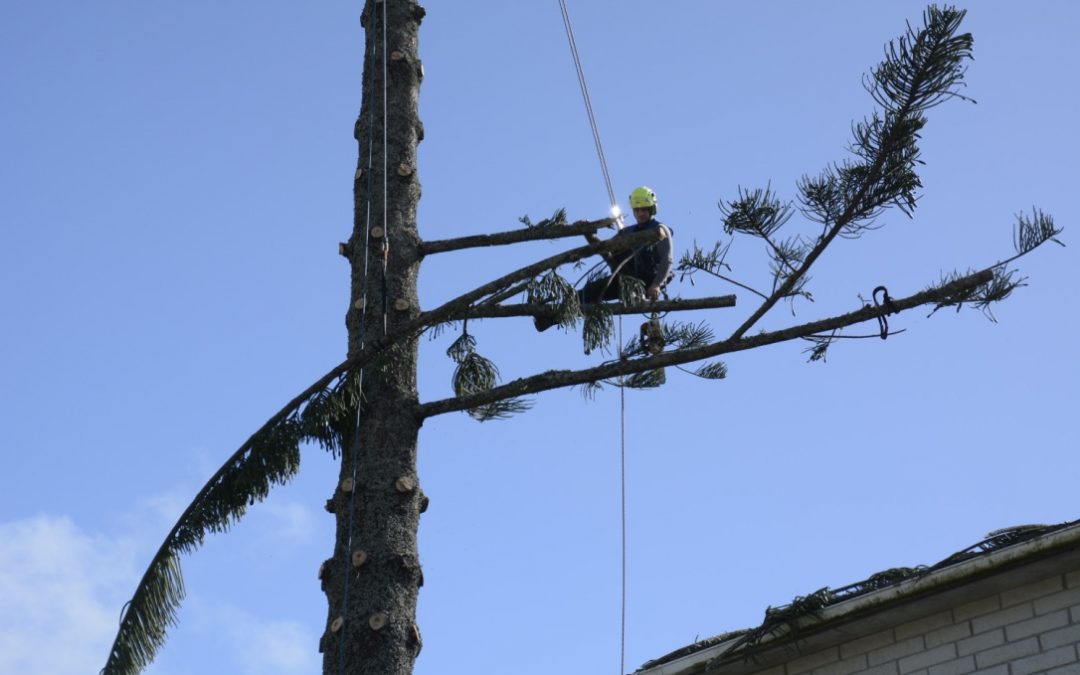Perhaps you’ve noticed a tree or several trees that sit too close to nearby powerlines. They may be on your property, near your property or in a bustling public zone. While it may seem that the trees are stable and harmless, there may be an underlying hazard.
As a way of shedding light on an essential safety topic, this blog will explore how these hazards can arise. Additionally, we will also look at the best course of action for removing these dangerous trees and who should be covering the cost. Depending on the position of the tree, this may concern the power company or landowner.
Why Should I Remove A Tree Too Close To The Powerline?
It’s understandable that the easier option is to forget about a chore that needs to be done. However, this job is extremely important and, if not completed effectively, can be dangerous for the public. Aside from potentially cutting the power for several neighbours, there is also the possibility of injury. Tree removal should be considered as it could fall onto a passerby or car and even damage nearby property.
This task is not like clearing out a gutter or raking leaves; there are severe consequences if a tree were to fall on powerlines. It’s important that you seek the highly-specialised skills of a qualified arborist like A1 Sure Services. Spanning 20+ years, our Kiwi-owned business includes state-of-the-art equipment to ensure safe and effective tree removal.
Am I Liable For Damage If The Tree Falls Onto The Powerline?
According to the Electricity (Hazards from Trees) Regulations written in 2003, a tree is warranted to be trimmed back if not completely removed from a nearby powerline.
If a tree on private property is close to a power line, the land owner and the power distributor are responsible for ensuring the tree does not become a safety hazard. The distributor runs the local electricity network and owns the power lines.
If you choose not to follow this strong recommendation to cut or trim the tree, the electricity distributor can organise tree removal or tree cutting. You will have to pay them back for the cost of the work (including the cost of repairing any damage and tidying up) as the tree is still on your property.
Should I Pay For The Powerline Tree Removal?
As a rule, the land owner typically will pay for this removal; however, according to the Citizens Advice Bureau, there are two exceptions to this:
1. First Cut/Notice:
The electricity distributor generally pays if this is the first cut or trim notice for the tree.
2. The Tree Owner Declares “No Interest” In The Tree:
Declaring no interest in the tree means the electricity distributor can remove or trim the tree at their own cost. They will require your permission to go onto your land to do the work – and you may ask them to tidy up after they’re finished.
However, this only applies to certain trees – for example, if the tree grew naturally and you had no idea that this tree may become a hazard with the established powerlines. If you declare no interest, you must inform the distributor within ten working days of receiving the notice.
What Happens To The Remaining Stump After Tree Removal?
If you decide to remove the tree, there will commonly be a stump remaining. Not exactly the most flattering, you can get in touch with A1 Sure Services and enquire about our stump grinding or stump removal services. This is the process where the stump is eradicated, and the remaining hole is typically filled with mulch and earth to give the ground its much-needed stability.
A1 Sure Services
A1 Sure Services, no job is too big or too small. As a family-run business with over 20 years of arborist experience, we provide high-quality and affordable tree care services to residential and commercial clients, Auckland-Wide.
We have public liability cover of up to $2,000,000, providing you with total peace of mind.
Our services include tree removal, tree felling, land clearing, tree trimming, tree pruning, stump grinding, stump removal and emergency tree services. We also offer a free on-site inspection typically within 48 hours of enquiry and highly competitive pricing every single time.
Contact us today for a free no-obligation, on-site inspection. Request a quote here!

